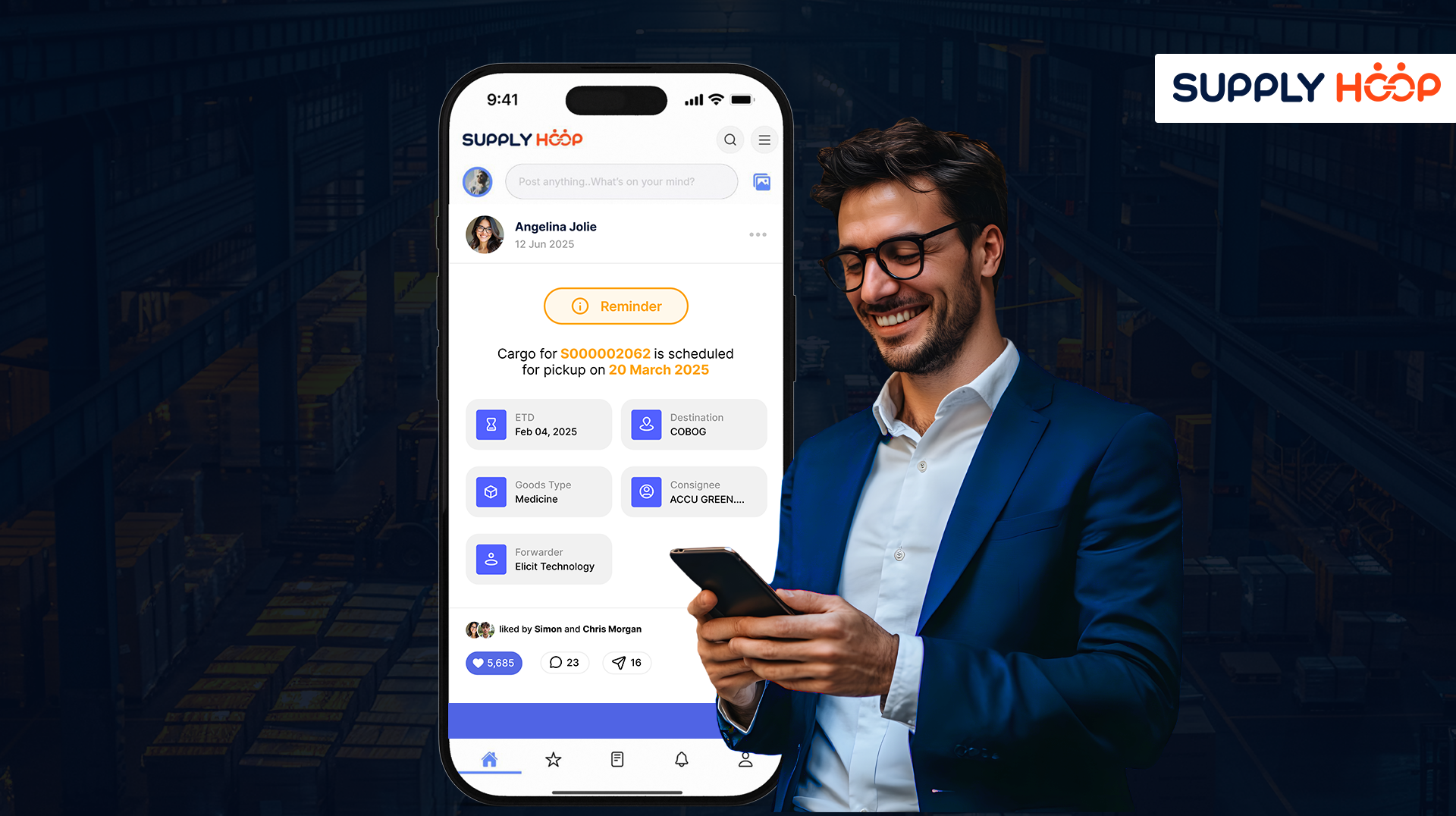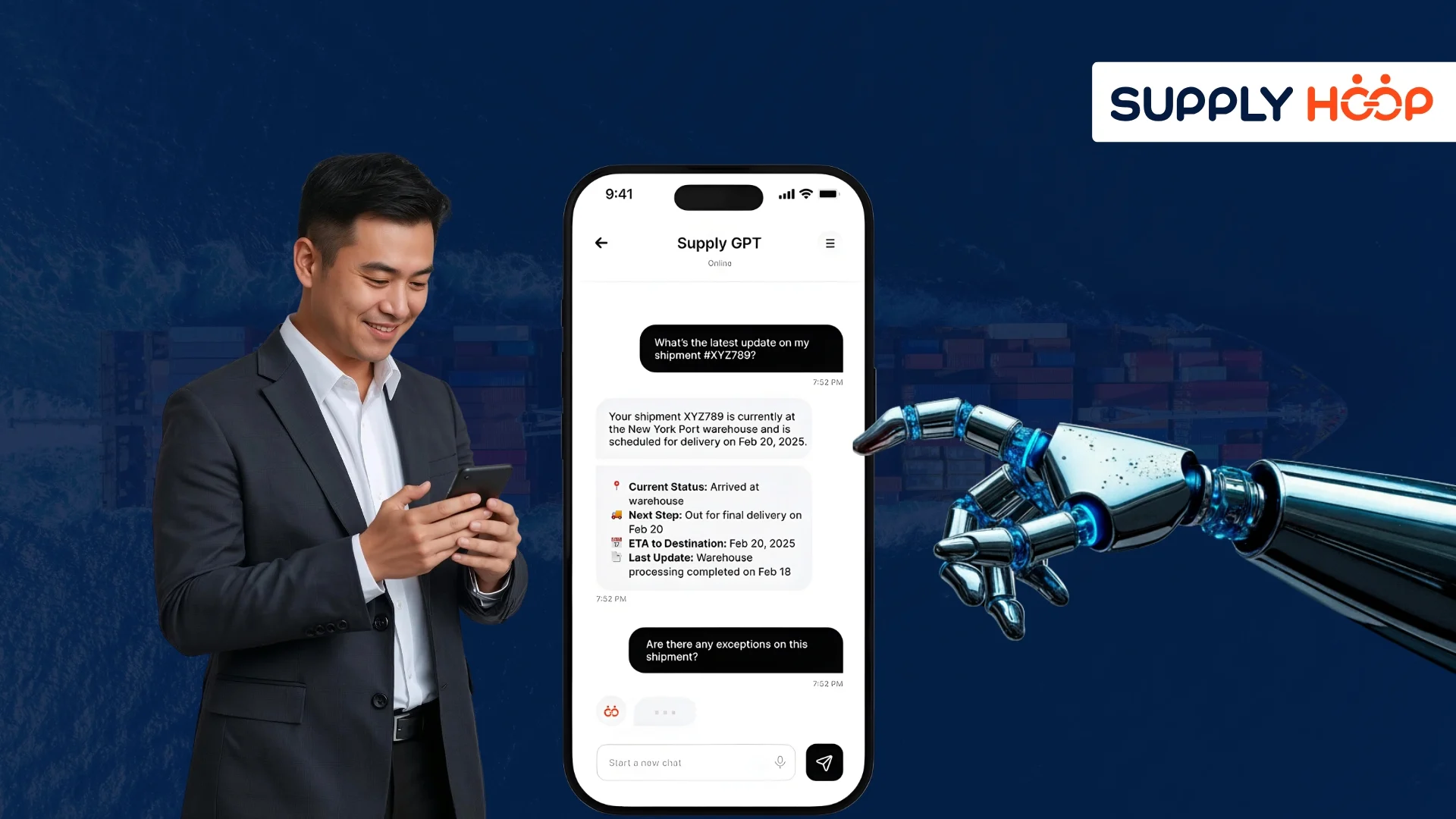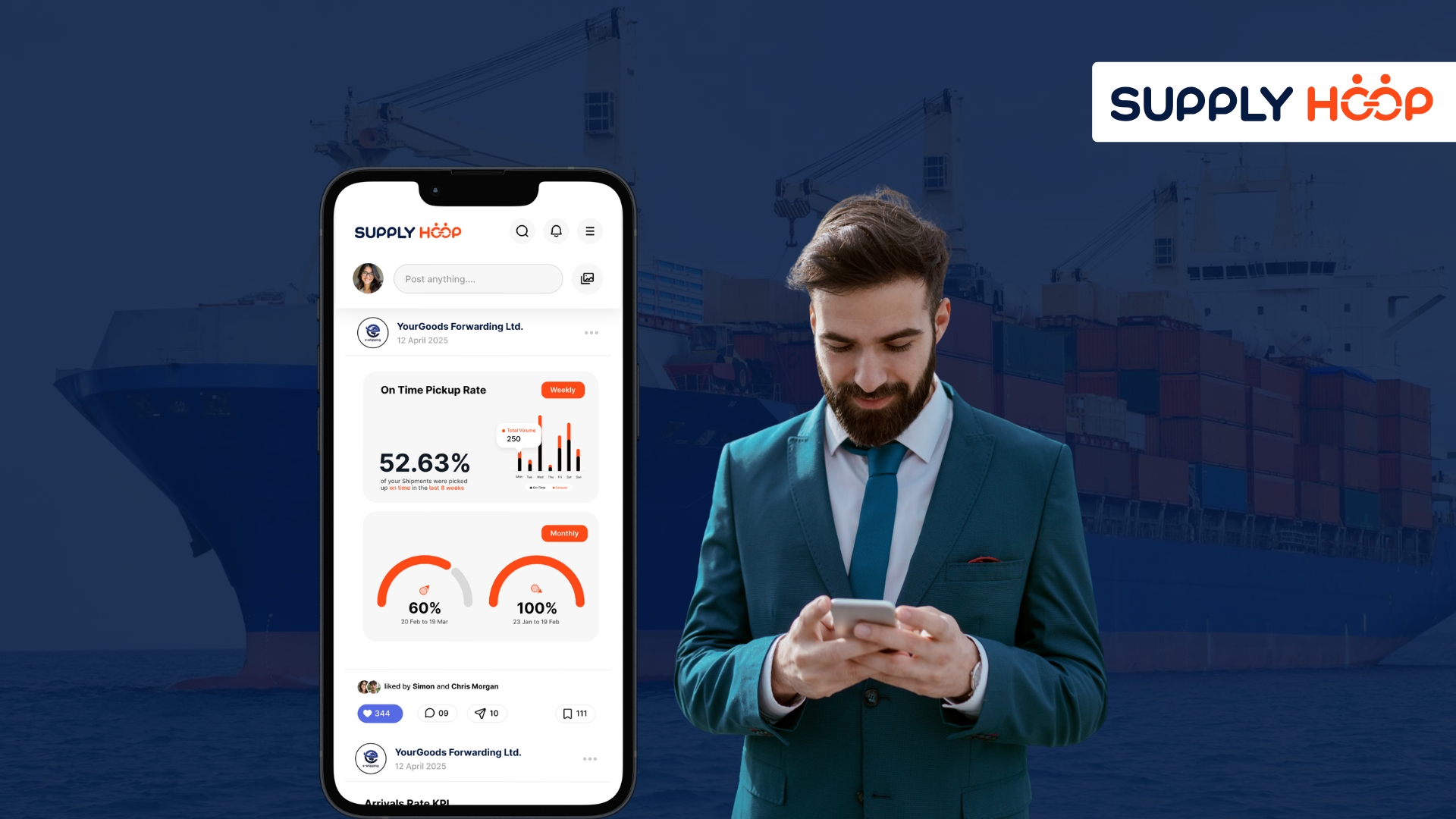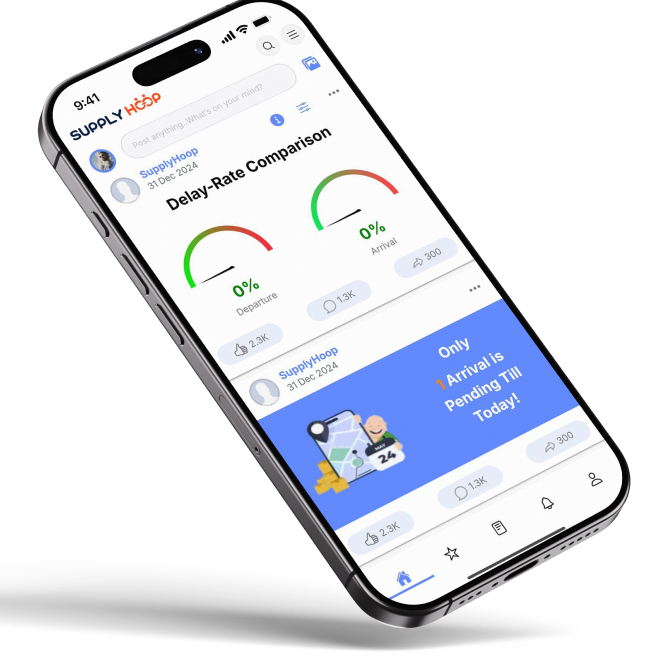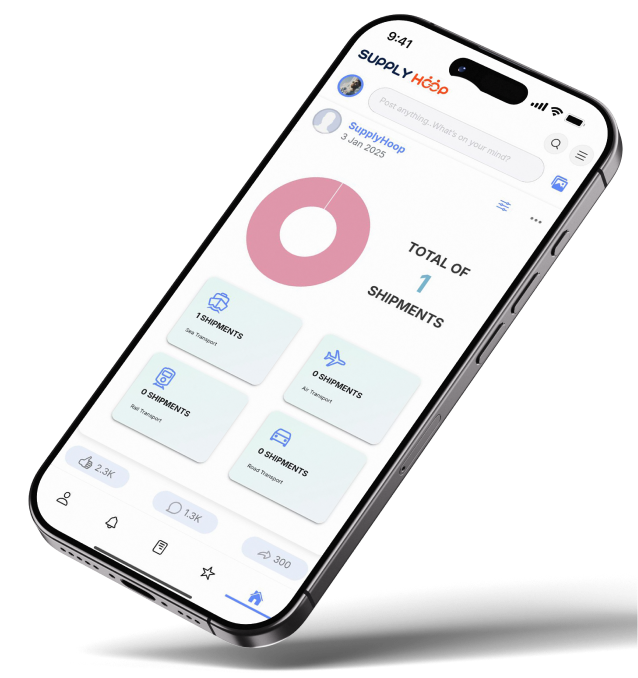Moving a full container of cargo might seem simple on paper: book a 20’ or 40’ box, load it up, send it off, and wait for it to arrive. But if you’ve ever managed FCL (Full Container Load) shipments, you know the real story involves more moving parts, changing rates, documentation, delays, and data than anyone cares to admit.
And yet, most forwarders are still relying on spreadsheets, fragmented tools, and email threads to track their FCL movements.
That’s where Supply Hoop steps in, a mobile app built to give you real-time visibility into your container journeys, from origin to delivery. Whether you’re managing large volumes, fragile cargo, or critical delivery schedules, we’ve got your FCLs covered, all in your pocket.
So, What is FCL in Shipping Terms?
FCL stands for Full Container Load, a type of ocean freight shipment where one shipper exclusively uses the entire space of a container. It’s the opposite of LCL (Less than Container Load), where several shipments share space in one container.
FCL means:
- Your goods are not mixed with other cargo
- The container is sealed at the origin and opened at the destination
- There’s less handling, so fewer chances for damage
If you’re shipping furniture, machinery, electronics, or even bulk packaged goods, you’re likely already shipping FCL.
How are FCL Shipments Charged?
When you ship FCL, you’re essentially renting an entire container at a flat rate. Here’s what goes into the cost:
- Container freight cost (based on size: 20’, 40’, or 40’ high cube)
- Chassis fee (to truck the container to/from the port)
- Port charges
- Customs clearance and duties
- Trucking to the final destination
Shipping lines adjust rates based on seasonal demand, routes, and port congestion, so pricing can swing wildly. Booking early and using a supply chain visibility tool like Supply Hoop helps you stay ahead of the rate curve with proactive alerts and smarter scheduling.
Why Use FCL Instead of LCL?
| Metric | FCL | LCL |
| Volume | Best for 13 CBM and above | Best for small shipments |
| Cost per CBM | Cheaper for higher volumes | Higher due to handling fees |
| Risk of Damage | Lower (sealed container) | Higher (multiple handling) |
| Transit Time | Faster (direct delivery) | Slower (consolidation required) |
If you’re regularly moving shipments over 14 CBM, FCL isn’t just faster, it’s more cost-effective.
Real-Time FCL Tracking From Your Phone
Whether your FCL is waiting for pickup in New Jersey, en route to LA, or being cleared at the port, Supply Hoop keeps you updated every step of the way. The app connects seamlessly with CargoWise and other ERP systems to track:
- ETA, ETD, ATA, ATD, and ETB timestamps
- Live container location (via GPS and port integrations)
- Delay notifications and dwell time monitoring
- Arrival & departure performance KPIs
- Digital documentation (BLs, invoices, customs forms)
All of this is viewable on a clean, intuitive mobile interface, no more logging into multiple portals or emailing for updates.
Key Visibility Features for FCL Shipments in Supply Hoop
1. Container Milestone Tracking
Know exactly when your container:
- Leaves the origin port (ETD)
- Arrives at destination port (ETA/ATA)
- Is ready for pickup (availability date)
- Clears customs and moves inland
2. Pending Shipments Dashboard
Quickly identify:
- FCLs that haven’t departed yet
- Shipments delayed at origin/destination
- Overdue pickups that may lead to demurrage or detention
3. Delay Rate Comparison
Evaluate which lanes, suppliers, or forwarders consistently hit or miss departure timelines. Use this data to negotiate rates, optimize routes, and avoid surprise fees.
4. Document Visibility
No more chasing down shipping docs. Access:
- Bills of Lading (BLs)
- Commercial invoices
- Customs declarations
- Booking confirmations
All from the same place you’re tracking your containers.
What Details Can You See About Your FCL Shipments in Supply Hoop?
- Container number & type (20’, 40’, HC)
- Departure and arrival ports
- Carrier name and voyage number
- Current status (booked, in transit, cleared, delivered)
- Chassis tracking & on-ground movement
- Port schedule & exceptions
- Documents and digital PODs
And with our WhatsApp integration, you can even request updates using a simple text like:
“Track container ABCD1234567”
“Show delays this week”
“Where is my FCL from New Jersey?”
You’ll get answers instantly, without logging in.
FCL Cost Optimization Tips from the Supply Hoop Team
- Book early during peak seasons (Aug–Nov)
- Compare ports for congestion-related surcharges
- Make sure your supplier knows FBA or destination warehouse requirements
- Avoid customs delays by pre-submitting compliant documentation
- Use our platform to track demurrage/detention windows in real-time
FCL container size and dimensions
If your cargo is over 14 CBM and not extremely heavy, consider booking an FCL, it could save you thousands per shipment over time.
Conclusion
FCL is a smart shipping strategy when your cargo volume justifies it. However, great strategy necessitates clever tools, which is where Supply Hoop steps in.
From booking to delivery, you can manage your entire FCL operation in one mobile platform, with live updates, shipment KPIs, exception tracking, and secure document access.
Ship big, ship smart, and track it all from your phone with Supply Hoop. Ready to simplify your FCL workflow? Let’s show you how. Book a demo today!
